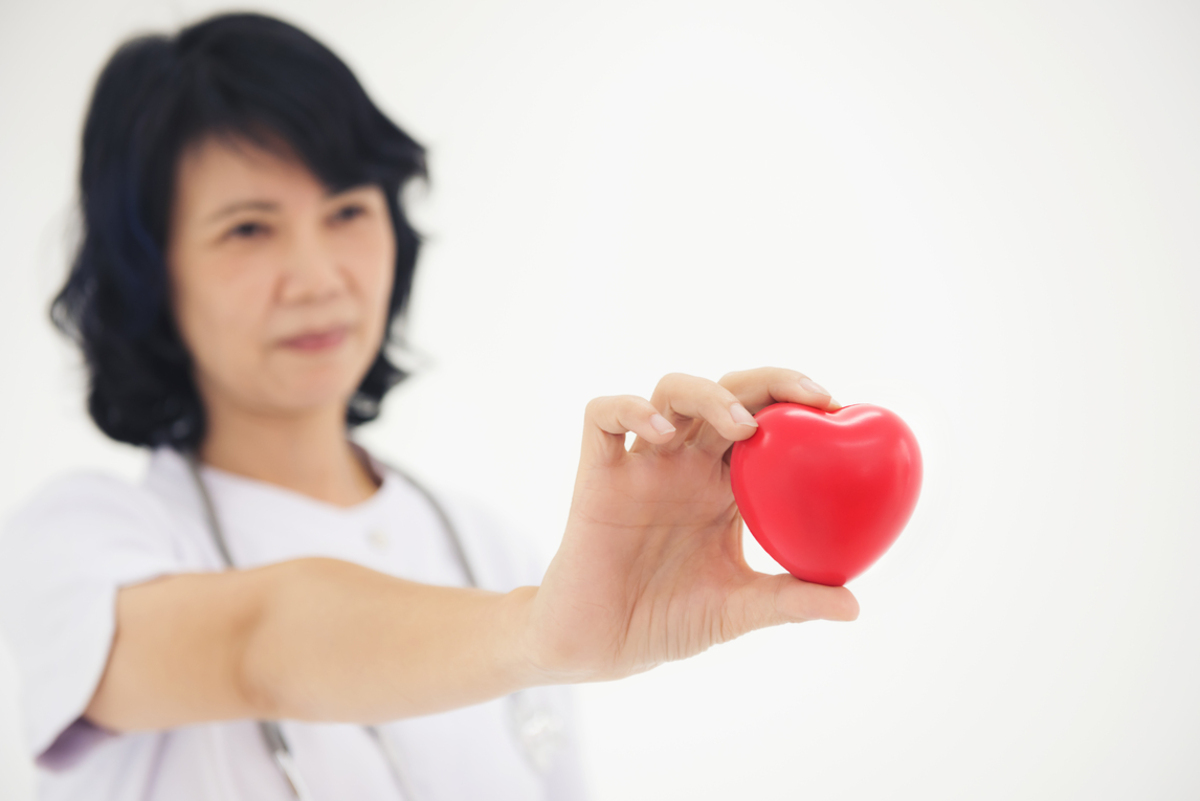Cardiomyopathy is an umbrella term that covers all heart muscle diseases. The heart muscle can become thickened, stiff, and enlarged, hindering the heart's ability to pump blood. The different forms of cardiomyopathy have a variety of possible causes and consequences, and can afflict people of all ages.

Dilated cardiomyopathy (DCM)
Dilated cardiomyopathy is a type of cardiomyopathy in which the heart's muscle walls stretch and become thin. It prevents the heart from contracting properly – an action needed for the effective pumping of blood. Patients diagnosed with dilated cardiomyopathy can easily suffer from heart failure. DCM also increases the risk of developing blood clots, issues with the heart valve, and an irregular heartbeat. It is important to see a doctor regularly for close monitoring of this disease.
Other factors that could result in the condition include:
- Inflammation-causing viral infections
- Issues with the heart valve
- Recreational drug use
- Diseases like amyloidosis, muscular dystrophy, and granulomatosis with polyangiitis
- Badly managed high blood pressure
- Mutated gene inheritance
- Pregnancy complications
- Other unknown factors in many people.
Restrictive cardiomyopathy (RCM)
Mostly occurring in older adults, this form of cardiomyopathy is rare. When RCM sets in, the major heart chamber walls turn stiff and rigid. This prevents them from relaxing well after contracting. Restrictive cardiomyopathy doesn’t allow the heart to adequately fill up with blood. The result is a reduction in blood flow from the patient’s heart.
Restrictive cardiomyopathy could cause a patient to develop heart failure symptoms like:
- Difficulty breathing
- Swollen ankles
- Issues with the rhythm of the heart
- Tiredness
Hypertrophic cardiomyopathy (HCM)
A patient is diagnosed with hypertrophic cardiomyopathy when the cells of their heart muscles enlarge, accompanied by a thickening of the heart chamber walls. This condition involves a reduction in the size of the heart chambers and limits their blood-holding capacity. The walls find it difficult to relax well and become stiff. People who suffer from HCM can still lead full and normal lives. In some cases, there may be no symptoms and no need for treatment.
This is not to say the condition cannot worsen. Cardiomyopathy-related deaths in children and young athletes mostly result from hypertrophic cardiomyopathy. When the major chambers get stiff, it causes a buildup of pressure on the parts that collect blood and this situation can escalate heart failure symptoms. The rhythms of the heart may then become abnormal. Blood flow can become restricted – a condition termed obstructive hypertrophic cardiomyopathy. Then again, the heart may develop leaks in its mitral valve, thereby leading to backward blood leakage.
All of the episodes that take place during HCM can cause patients to experience:
- Shortness of breath
- Fainting
- Pains in the chest
- Dizziness
There is a possibility that the patient may also develop a heart infection when HCM sets in. Patients who suffer from hypertrophic cardiomyopathy in its severe form need to pay regular visits to their doctor, as constant monitoring is required. They will also get advice about the kind of exercise that they can engage in. Some changes in their lifestyles will be recommended.
Arrhythmogenic right ventricular cardiomyopathy (ARVC)
ARVC is characterized by abnormalities in proteins that hold muscles together in the heart. The cells in the muscle may die and will have to be replaced. This time, fatty as well as fibrous tissues replace dead ones. The major heart chamber walls enlarge and become thin, preventing them from pumping blood effectively.
ARVC leads to heart-rhythm issues. Since the flow of blood is inadequate, expect to see heart failure symptoms as well. Arrhythmogenic right ventricular cardiomyopathy is not common and is mostly related to genetics. Patients inherit this condition, which occurs when certain genes mutate or change.
People who suffer from ARVC or at risk of developing the condition need to consult their cardiologist for an in-depth discussion about the issue.
Unclassified cardiomyopathy
This describes other forms of the disease not discussed above.
Is there treatment for cardiomyopathy?
Treatment is not necessarily required for everyone who suffers from cardiomyopathy. In some cases, the disease is mild and patients can manage their cardiomyopathy through lifestyle changes, especially if the cause of the disease has nothing to do with genetics.
Some of these lifestyle changes include losing weight, stress management, controlling underlying conditions, cutting down on alcohol intake, quitting smoking, and getting sufficient amounts of sleep. With the help and guidance of a healthcare professional, managing cardiomyopathy is possible.
Before medical professionals initiate treatment for cardiomyopathy, the specific cause must be considered. Doctors may place a patient under therapy to improve their cardiac output, ensure the maintenance of ejection fraction, and protect the heart muscles from subsequent harm.
Where electrical impulse disruptions are found to be the cause, stability and coordination are restored by implanting heart pacemakers. Defibrillator implants may also be used where the risk of sudden cardiac death exists. Some devices with dual functionality act both as defibrillators and pacemakers. Where cardiomyopathy is very severe and the above-mentioned methods of treatment are not effective, a heart transplant may become the last resort.
- Photo courtesy of SteadyHealth


Your thoughts on this